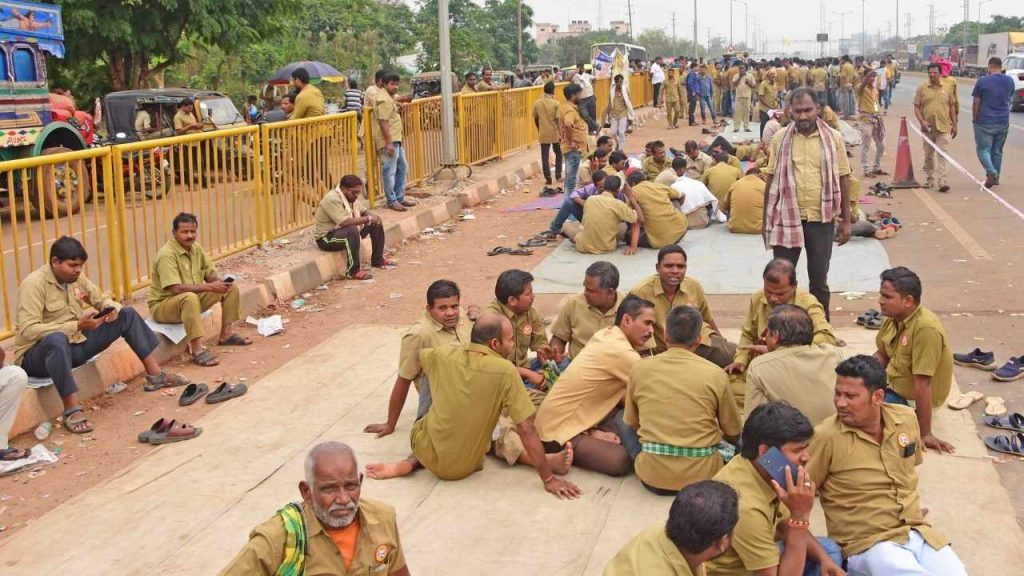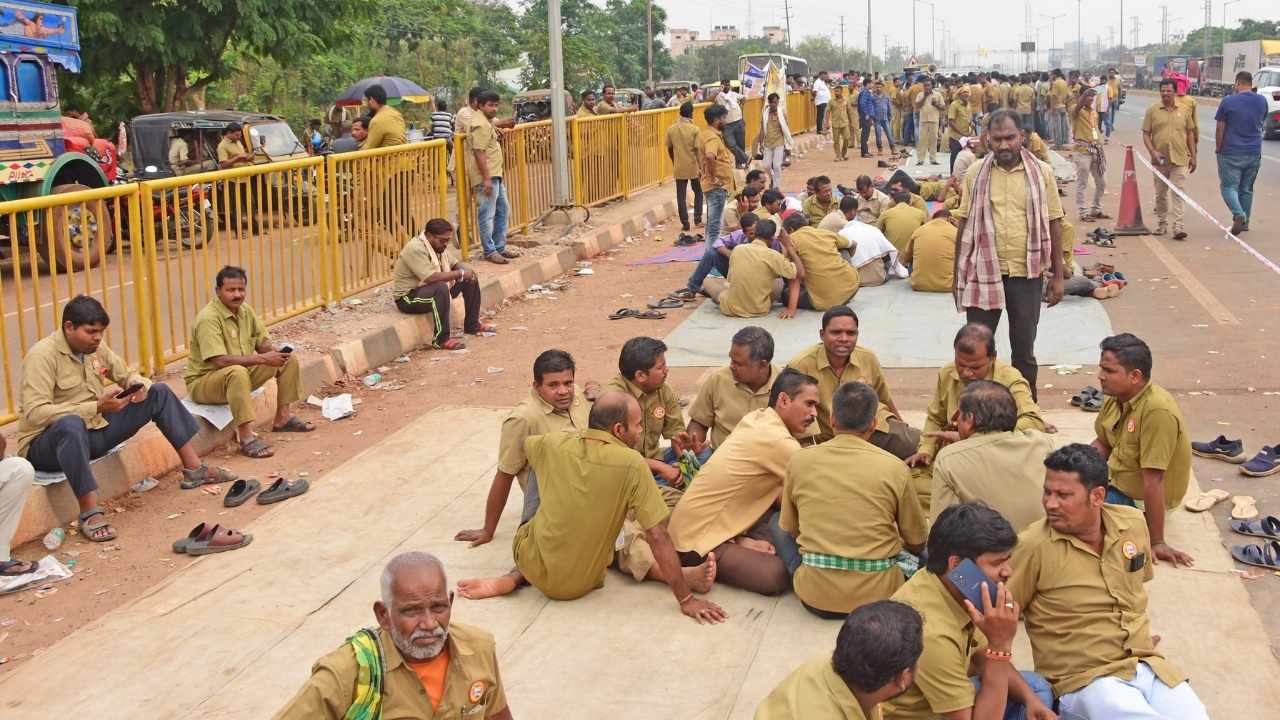In Odisha, one of India’s vibrant and culturally rich states, residents are facing significant disruptions as a statewide driver’s protest continues to impact daily life. The protest, which began on July 8, 2025, has affected public transportation, fuel distribution, and the availability of essential commodities, including milk and food supplies. Drivers, under the leadership of the All Odisha Driver Mahasangha, have demanded several welfare measures, but with no breakthrough in negotiations, the strike shows no sign of ending soon. The impact on the state is already noticeable, with various sectors being hit hard. For many, the strike has brought Odisha’s bustling cities, like Bhubaneswar and Cuttack, to a standstill.

This ongoing strike is particularly concerning due to its direct effect on the supply chain for essential goods. With transport services halted, businesses are struggling to meet consumer needs, and the prices of goods are starting to rise. The lack of transport has led to a situation where people are worried about the availability of necessary items like food and fuel, with fears of shortages looming.
Essential Commodities in Short Supply as Odisha Drivers
| Key Topic | Details |
|---|---|
| Start of Strike | July 8, 2025 |
| Key Impact Areas | Public transportation, fuel supply, milk, food delivery |
| Protesting Body | All Odisha Driver Mahasangha |
| Demands of Drivers | Pension benefits for drivers over 60, ₹20 lakh insurance, restrooms along highways, Odia driver preference in mining jobs, and recognition of Drivers’ Day |
| Affected Commodities | Fuel, vegetables, grains, milk |
| Government Response | Ongoing talks with protesters; no formal agreements yet |
| Potential Consequences | Increased commodity prices, more supply chain disruptions |
| Source for More Information | Odisha TV |
Odisha is facing a tough situation as the drivers’ strike continues, and essential commodities become scarce. While the drivers’ demands are justified, the ongoing protest is having a wide-reaching impact on the state’s economy and daily life. For residents and businesses, it’s crucial to stay informed, stock up on essentials, and plan carefully to avoid disruptions. We hope the government and the protesting drivers can reach an agreement soon, allowing life in Odisha to return to normal.
Background of the Odisha Drivers’ Protest
In recent years, Odisha’s transportation sector has faced numerous challenges. The drivers’ strike is one of the latest disruptions, driven by the demands of the drivers’ union. The protesters, representing both private and public transport drivers, are advocating for better working conditions, job security, and welfare benefits.
The All Odisha Driver Mahasangha has become a powerful voice for the state’s drivers, representing nearly 4 lakh drivers across the region. The union has outlined several demands in their 10-point charter, most notably for pension benefits for drivers over 60, which they argue is crucial for the welfare of older drivers who no longer have the strength to work long hours on the road.
Why This Protest Matters
1. Transport Sector Strain
The most visible impact of the strike is the disruption to public transport services. With private buses accounting for roughly 80% of the state’s total fleet, the absence of these buses has caused chaos in cities like Bhubaneswar and Cuttack, where thousands of daily commuters are stranded at bus terminals. Inter-district travel has also been severely impacted, with long delays and cancellations becoming a common sight.
This disruption in transport is felt not only by the residents but also by businesses that rely on transport to keep their operations running smoothly. Without these essential services, employees cannot reach their workplaces, and students cannot attend schools. Essential workers in particular have been hit hard, as the lack of transport affects their ability to perform critical tasks in healthcare, emergency services, and public service roles.
2. Fuel Shortages
Another major concern is the fuel crisis that has emerged as a result of the strike. Fuel tankers are no longer able to make their regular deliveries from key depots in Paradip, Balasore, Jharsuguda, and Jatni, putting a strain on the state’s fuel supply chain. The Utkal Petroleum Dealers’ Association has already warned that, by July 10, existing fuel stocks will run out. Fuel shortages will have a ripple effect, making transportation even more difficult and driving up prices for both fuel and essential goods.
3. Shortage of Essential Commodities
Perhaps the most pressing issue for the general public is the shortage of essential commodities like vegetables, grains, and milk. The disruption to transport services means that food deliveries are delayed, and grocery stores are quickly running out of stock. Markets in major cities like Bhubaneswar are struggling to keep up with demand, leading to price hikes and worries about availability.
The Odisha State Co-operative Milk Producers’ Federation Limited (OMFED) has reported challenges in delivering milk to various districts. Though some milk vans have resumed operations, the supply remains inconsistent, leading to concerns about milk availability, especially in urban areas. Families, particularly those with young children, are finding it harder to get their daily milk supply, a basic need for many households.
The Drivers’ Demands
The ongoing strike is not just a response to poor working conditions but reflects the wider challenges faced by drivers in Odisha. Some of the key demands made by the protesting drivers include:
- Pension benefits for drivers over the age of 60, ensuring they have financial support after a lifetime of hard work.
- Insurance coverage of ₹20 lakh, a measure to protect drivers and their families in case of accidents or emergencies.
- Recognition of drivers’ contributions to the economy and the country by officially marking September 1 as National Drivers’ Day.
- Restroom facilities every 100 km along highways to ensure drivers can maintain their health and hygiene on long trips.
- Preferential job allocation for Odia drivers in Odisha’s mining sector, ensuring local drivers are given priority in employment.
These demands highlight the critical need for improving the welfare of drivers, who are essential to the functioning of the state’s economy.
Government’s Response
The Odisha state government has been engaged in continuous talks with the protesting drivers, but a formal resolution has yet to be reached. The government has acknowledged some of the drivers’ concerns, including the need for better working conditions and welfare benefits. However, disagreements remain, especially over the pension scheme and insurance coverage.
In the meantime, government officials are exploring temporary solutions to ensure that essential goods can still be delivered across the state. This includes potentially requisitioning public transport buses and using state-run trucks for fuel and food deliveries. Private transport operators are also being urged to resume operations, though many are hesitant to break ranks with the striking drivers.
Practical Advice: How to Navigate the Crisis
If you live in Odisha or are planning to visit in the coming days, it’s essential to plan ahead and adjust your routine to minimize disruptions. Here are some practical tips for getting through this challenging period:
- Monitor Transport Services: Keep an eye on local news outlets and government announcements regarding the resumption of transport services. Alternative modes of transportation like shared autos and rickshaws may be available in some areas.
- Stock Up on Essentials: With food and milk deliveries delayed, it’s a good idea to stock up on non-perishable items such as rice, lentils, and canned goods.
- Fuel Awareness: If you rely on a vehicle for travel, fill up your tank as soon as possible before fuel stocks run low. Keep in mind that fuel stations in urban areas may run dry faster than in rural areas.
Odisha Faces Major Transport Disruptions as Drivers’ Association Calls for Ceasework
Bharat Bandh Hits Odisha: Roads Blocked, Public Transport Suspended Amid Nationwide Protest
Frequently Asked Questions
1. How long will the strike last?
The strike is ongoing with no clear end date. Talks are in progress, but no agreements have been reached yet.
2. What can I do if I need to travel urgently?
Consider alternative transport options such as private taxis or ride-sharing services. Plan for possible delays and check availability frequently.
3. Are there any efforts to resolve the strike?
Yes, the state government is engaged in negotiations with the protesting drivers. However, no formal resolution has been reached yet.
4. How will the strike affect fuel prices?
Fuel prices are expected to increase as fuel shortages become more severe, particularly in urban areas.
5. Will the milk supply return to normal soon?
Milk supply is inconsistent, and while some deliveries have resumed, the situation remains unpredictable. It’s best to stock up when possible.





